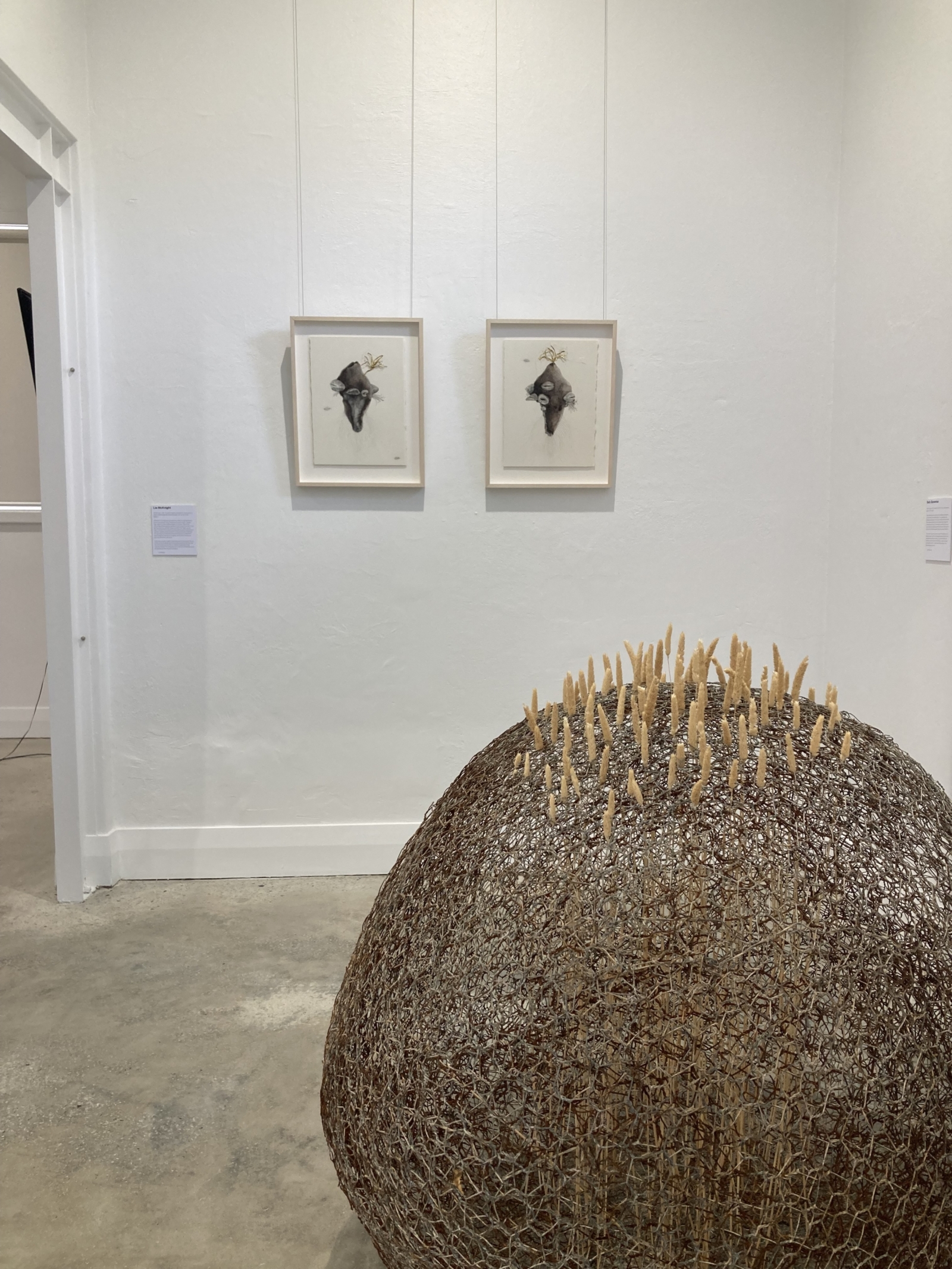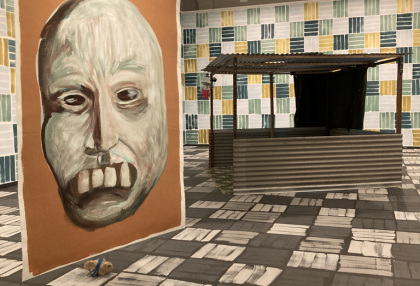Submitted Review
‘Melville Contemporary Art Award’
‘…a reminder of migration stories, of remembering and re-establishing home’
After a delay due to Perth’s snap lockdown in early July, it was a refreshing moment to go out and celebrate the inaugural biennial Melville Contemporary art prize at Goolugatup Heathcote Gallery. I say ‘refreshing’ because everyone there was surely grateful to have escaped further lockdown in the city mid-winter, but also because at the time of writing this review, life in the arts is loaded with heaviness due to major funding cuts in the sector before and throughout the global pandemic. In addition to showcasing the award’s finalists, the gallery also celebrated two solo exhibitions Defence/Defiance by Holly O’Meehan and Habitation and Decay by Ben Crappsley, as well as the new season of Goolugatup Sounds II. The culmination of these events felt like a genuine celebration of artists and their networks within Perth, and particularly special when the likelihood of any gathering feels tenuous.
The artists shortlisted for the Melville Contemporary Award included early and mid-career heavyweights who are noticeably gaining momentum in their careers: Sam Bloor, Mathew Clark, Erin Coates, Jennifer Cochrane, Rebecca Dagnall, Tarryn Gill, Pascale Giorgi, Sohan Ariel Hayes, Rusty Maeva, Lia McKnight, Ross Potter, Sally Stoneman, and Dung-Chuan Wen.
Sohan Ariel Hayes’s piece Panoramic View of Albany (Kinjarling), The Place of Rain (2019) is an animation that reimagines an etching of Albany from 1834 and shows a storm sweeping across the sound; Rebecca Dagnall’s piece Portrait of the Dead #2 is a photographic portrait of a Black Cockatoo that had been found after a roadkill accident. This portrait is majestic piece that nods to a dystopian gothic that pervades much of Dagnall’s work; Tarryn Gill’s Show Girl (Jessica) (2020) is a hanging soft relief of a performer emerging from the stage curtains – a red stiletto and all leg peeks out. Gill explores the performativity and expectations of the female body on stage through her pieces which are often surreal spectacles of human and non-human bodies. Bringing together these artists as frontrunners for the award shows that contemporary art in Perth is interested in unravelling personal and communal identities, as well as the reparation, and reimagining of local histories.
The highly commended prize has been awarded to Ross Potter for his I Don’t Feel So Well, which is a sculptural drawing of a digestive tract that is contorted, decaying, and twisted. This piece is a new direction for Potter’s creative practice which leans towards exploring anthropomorphic states.
This year’s acquisitive first prize has been awarded to Pascale Giorgi’s My Own Private Lion (South Fremantle), a sculpture of a small black Medici Lion – much like the ornamental garden lions often featured at the front gate, driveway or letterbox of mid-century Italian Australian suburban homes. When standing up close to the sculpture, viewers notice the scent of rosemary oil which can be smelled most strongly from the mane of the lion. This distinct aroma has an immersive effect that brings attention to another time and place, away from the white gallery. My Own Private Lion is a reminder of migration stories, of remembering and re-establishing home, and the importance of visual signifiers of culture and identity even if they fall short of quelling homesickness. Giorgi monumentalises some of the heart-warming, mournful, and satirical aspects of migration, dislocation, and home, all in this small sculpture – it’s a prize well earned.












No Comments